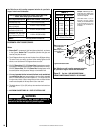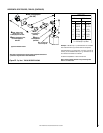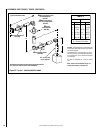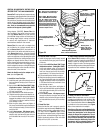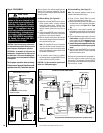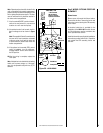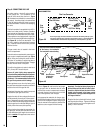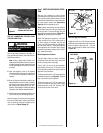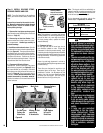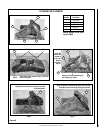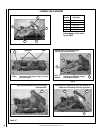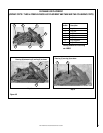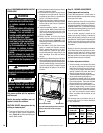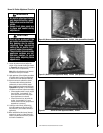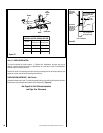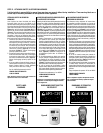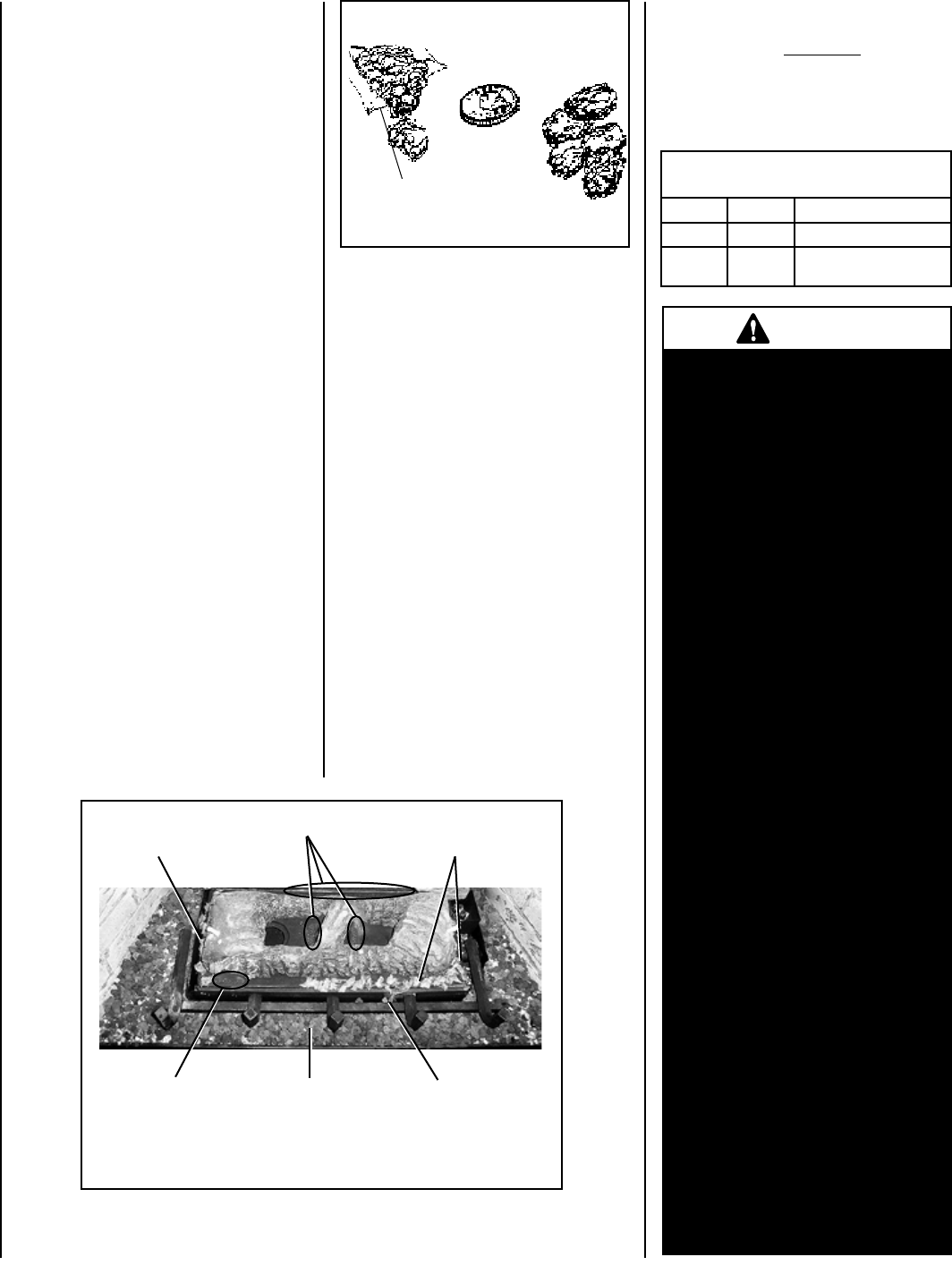
28
NOTE: DIAGRAMS & ILLUSTRATIONS ARE NOT TO SCALE.
REFERENCE
Firebox Accessories / Parts
Cat. No. Model No. Description
88L53 FGE Bag of Glowing Embers
80L42 FDVS
Bag of Decorative
Volcanic Stone
Glowing Embers
Bag of Glowing
Embers (rockwool)
Separate into Quarter
Size (separate) Pieces
Step 8. INSTALL VOLCANIC STONE,
GLOWING EMBERS AND LOGS
NOTE: Turn off all electricity to the appliance
before you install volcanic stone, embers and
logs.
Loosen the set screw for the venturi air shut-
ter. Manually actuate the air shutter through
several cycles. Set the air shutter to 3/32"
before placing the logs.
1. Remove the front glass enclosure panel
(see Removing and Installing Glass Enclosure
Panels on Page 31).
2. Remove log set box from firebox. Next,
remove embers and volcanic stone from con-
trol compartment. Handle logs carefully to
prevent breakage.
3. Install decorative volcanic stone - Sprinkle
the decorative volcanic stone in a pleasing pat-
tern (see Figure 44). The volcanic stone should
be placed directly on top of the firebox bottom,
along the slope and to the back at the right and
left sides of the burner. Position any ceramic
fiber liners before placing the stone. Logs can
be positioned after the volcanic stone.
4. Placement of Glowing Embers -
Separate the Embers (rockwool) into pieces
about the size of a quarter (see Figure 45). Keep
the pieces fluffed up, not matted. Distribute
these pieces over the surface of the burner, as
shown in Figure 44. Do not use more than is
necessary. Ensure that the main burner slots
remain uncovered by the ember material.
Position the embers on the small holes of the
ember bed area.
Figure 45
Note: This appliance is provided with enough
Glowing Embers for several applications, do
not use all that is in a new bag at one time.
For best glowing effect, replace the ember
material annually.
5. Placement of Logs -
All top logs that rest on lower logs, do so
over notches, indents or nubs. Proper log
placement is critical to prevent sooting. Logs
should be placed in the gaps between the flame
peaks and should be positioned so they do not
impinge the flames. Follow the log placement
instructions exactly.
Proper log and twig placement is critical to
encourage outstanding flame appearance and
prevent sooting.
These fires are designed to provide a rich
orange/red glow on the logs. Rear log (2)
placement is critical. An adjustment of one
quarter of an inch can have significant effect
on flame color and height. Pull rear log (2)
forward as far as it will go on the pins.
WARNING
•
DO NOT attempt to install the
logs until the appliance instal-
lation has been completed, the
gas line connected and tested
for leaks and the initial burner
operation has been checked
out.
•
The size and position of the log
set was engineered to give the
appliance a safe, reliable and
attractive flame pattern. Any
attempt to use a different log
set in the fireplace will void
the warranty and will result in
incomplete combustion, soot-
ing, and poor flame quality.
•
Logs get very hot and will
remain hot up to one hour
after gas supply is turned off.
Handle only when logs are
cool. Turn off all electricity
to the appliance before you
install grate, volcanic stone,
vermiculite, embers and
logs.
•
This appliance is not designed
to burn wood. Any attempt
to do so could cause irrepa-
rable damage to the appliance
and prove hazardous to your
safety.
•
If logs are not installed
according to the log instal-
lation instructions, flame
impingement and improper
combustion could occur and
result in soot and/or excessive
production of carbon monoxide
(CO), a colorless, odorless,
toxic gas.
Glowing Embers
(Rockwool)
Do Not Place
Embers On
Main Ports
Main Ports Glowing Embers
(Rockwool)
Mixture Of Vol-
canic Stone
& Vermiculite
Place Embers
In Front Of
Ports Here
Figure 44
Note: The log set and fire are artistically ar-
ranged to provide a random asymmetric look
to the fire. The fire intentionally does not burn
in the left rear quarter of the log set.
For log placement instructions, refer to the
detailed steps in Figures 46, 47 and 48.



